During the Manson murders, Charles Manson's followers gruesomely killed actress Sharon Tate and six others in Los Angeles on August 9 and 10, 1969.
The Manson murders of 1969 brought a nation entrenched in hippiedom and free love to its knees. Where there was once hope for a brighter future, there was now a black hole of despair and literal disbelief.
The slaughter of Hollywood elites by devotees to cult leader Charles Manson was simply too perplexing to process. If actress Sharon Tate could be murdered while eight and a half months pregnant, all bets were off.
On August 8th, Manson’s followers Charles “Tex” Watson, Susan Atkins, Patricia Krenwinkel, and Linda Kasabian approached Tate’s home at 10050 Cielo Drive in Los Angeles, California, where, on Manson’s orders, they were to “totally destroy everyone in that house, as gruesome as you can.”
Gruesome was an understatement. The Manson Family members not only murdered Sharon Tate and her unborn child, but also celebrity hairstylist Jay Sebring, coffee heiress Abigail Folger, aspiring writer Wojciech Frykowski, and a young salesman named Steven Parent, who had the misfortune of being on the property that night. To make the crime scene even more horrific, Atkins wrote “PIG” on the front door of the home in Tate’s blood. But Manson wasn’t pleased. He was purportedly angry that the killers had been “sloppy.”
For police investigating the scene at 10050 Cielo Drive on August 9th, the motive for such a brutal crime was initially elusive. Police officers, investigators, and members of the press were confounded by what they saw.

Los Angeles Public LibraryThere’s no hard evidence that cult leader Charles Manson personally killed anyone himself, but he spent much of his life in prison for allegedly ordering the Tate murders.
Some early theories relied on the seemingly negative impact that drugs had on the culture of 1960s America, as though the gruesome murders of Tate and her friends were merely the result of a drug deal gone wrong — but investigators soon uncovered a much more harrowing truth.
As investigators grappled with the scene of the Tate murders, Manson allegedly sent his loyalists after Leno and Rosemary LaBianca — a couple who were not Hollywood elites at all, but business owners in the grocery and clothing industries. This time, however, he went along for the ride — still aggravated at the messiness of the Tate murders the night prior.
Rosemary’s children, Suzan, 21, and Frank, 15, came home later to discover the grisly scene, their parents bound, gagged, and stabbed to death, and the misspelled words “HEALTER SKELTER” written in their blood on the fridge. There seemed to be no real purpose for the LaBianca murders other than Manson allegedly wanting to show his followers the “proper” way to commit murder — by not telling the victims they were about to be killed.
He allegedly assured the LaBiancas that they would be robbed but not harmed. Instead, he had his devotees stab the couple with a chrome-plated bayonet, carve the word “WAR” into Leno LaBianca’s chest, and leave the bloody crime scene to be discovered by the couple’s children.
And even though many of those responsible were apprehended before Christmas of that year, the echoes of their gruesome deeds reverberated through Hollywood’s hills and canyons for years to come. Even now, more than 50 years later, the Manson murders of 1969 have a powerful impact on American culture, history, and the country’s collective memory.
Charles Manson Before The Murders
Charles Manson was born Charles Milles Maddox in Cincinnati, Ohio on November 12, 1934, to a 15-year-old runaway named Kathleen. While she was pregnant, she married a man named William Manson (not the biological father of her child), but the marriage didn’t last long. And when Charles was just five years old, Kathleen landed herself in jail for theft and assault.
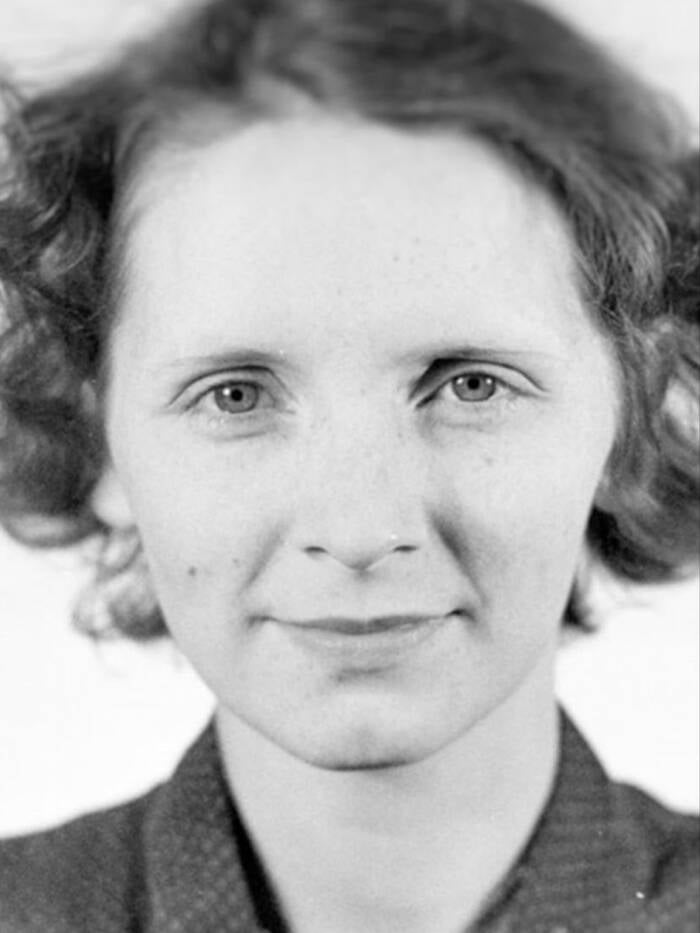
IMDbKathleen Maddox, Charles Manson’s mother.
Charles Manson would eventually follow in his mother’s footsteps and encounter trouble with the law. He first spent time in prison as a teenager in 1951, and he was described in probation reports as a person with a “marked degree of rejection, instability, and psychic trauma.”
In 1955, he married 15-year-old hospital waitress Rosalie Jean Willis. The 20-year-old ex-convict soon moved his pregnant wife to Los Angeles with him — but failed to consider that driving a stolen vehicle across state lines was a federal offense. Their relationship soon came to an end in 1958.
Meanwhile, Manson continued to get in trouble for various offenses, and in 1961, he was sentenced to 10 years in a federal prison on McNeil Island in Washington State — this time for federal check forgery — and he soon began looking into Scientology and learning how to play the guitar.

Albert Foster/Mirrorpix/Getty ImagesCharles Manson learned to play guitar while in prison in the early 1960s.
That was when he decided he wanted to be a world-famous rock star.
Manson was released early from prison on March 21, 1967. By then, he’d developed a knack for getting people to listen to him, as well as his belief that he was destined for greatness. Before long, he found true believers.
Amassing The Manson Family Cult
The Manson Family may have looked like your standard group of California hippies at first glance, but the ragtag band of followers was far from it. Their “peace and love” lifestyle was tainted with a dose of death.
After Charles Manson’s release from prison in 1967, the charismatic figurehead amassed about 100 followers — mostly middle-class, young women — who were drawn to Manson’s radical views and penchant for free love and hallucinogenic drugs, particularly LSD, which had also been used by the U.S. government in mind-control experiments. That capability for psychological influence benefitted Manson greatly.
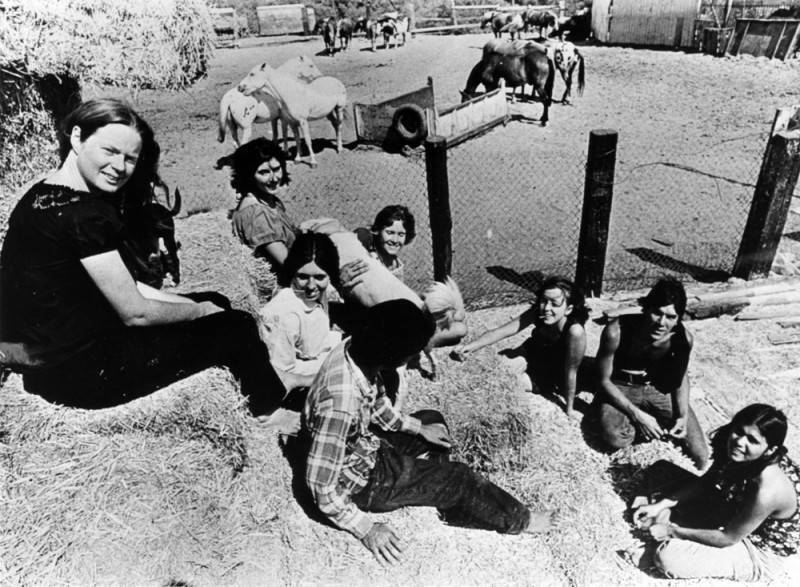
Michael Haering/Los Angeles Public LibraryThe Manson Family at Spahn Ranch on the outskirts of Los Angeles.
The Family first moved to San Francisco, but — after spending the summer of 1968 living with Dennis Wilson of the Beach Boys outside Los Angeles — later settled on a ranch owned by George Spahn on the outskirts of L.A.
Spahn Ranch became their de facto compound — a gathering place for acid trips, group sex, Manson’s soliloquies on a supposedly imminent race war, and Manson reinforcing his belief that he was the second coming of Christ.
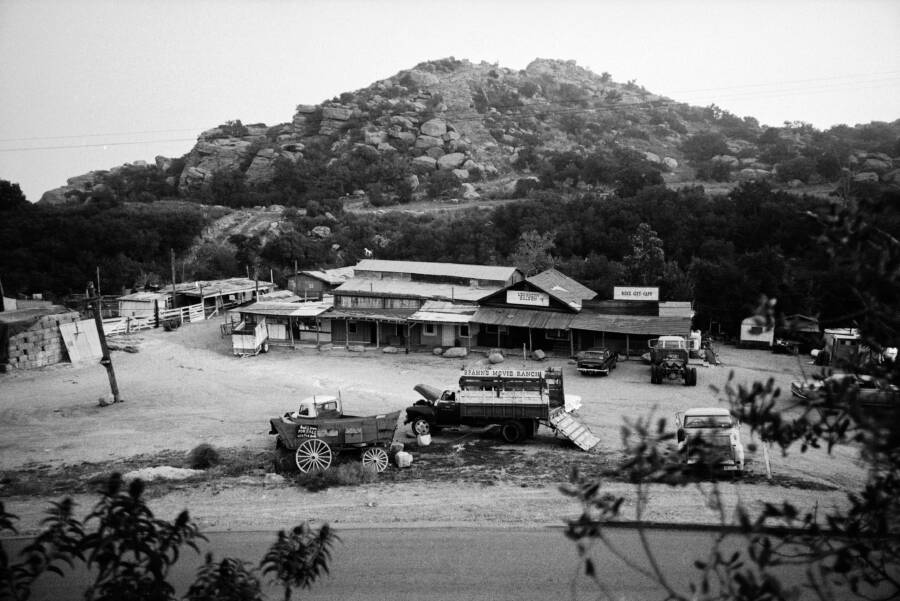
Ralph Crane/The LIFE Picture Collection/Getty ImagesThe Spahn Ranch, where Manson and his “family” dwelled in the late 1960s.
But it wasn’t just drugs that shaped Manson or molded his disciples into the loyalist killers they became. He obsessed over The Beatles track “Helter Skelter,” which became a hypnotizing mantra for the group, as well as a slogan of sorts for their supposedly God-given mission. Though the song was written about an amusement park ride, the Manson Family was purportedly convinced that it was about the so-called imminent “race war.”
Charles “Tex” Watson, Susan Atkins, Patricia Krenwinkel, Linda Kasabian, and Leslie Van Houten were among this cult of family members — and all played a role in the murders at the Tate and LaBianca homes a year later.
The Start Of The Manson Family Murders
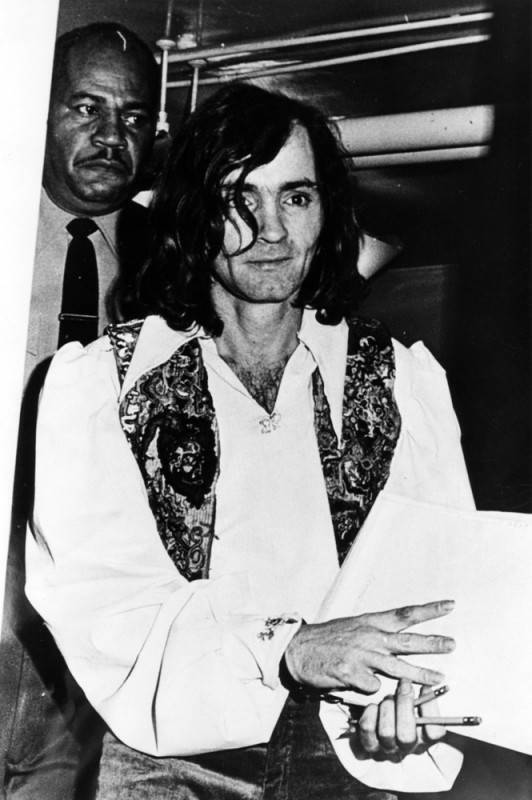
Los Angeles Public LibraryCharles Manson knew about the house at 10050 Cielo Drive through his friendship with Dennis Wilson.
The Tate murders epitomized the Manson Family’s murderous mission, with the vile slaughtering of Sharon Tate and her unborn baby pushing this particular incident over the edge of gruesome. Though more people would be murdered that night and the following day, the sheer grisliness of that crime and the celebrity aspect overshadowed the others.
At the time, Sharon Tate was married to the infamous director Roman Polanski, who had courted the actress vigorously while they were working on The Fearless Vampire Killers. Although Tate had been dating hairstylist Jay Sebring since 1964, after the movie wrapped, she told him that she and Polanski were in love. Still, Tate and Sebring remained friends.

Evening Standard/Getty ImagesPolish film director Roman Polanski and American actress Sharon Tate at their wedding.
Tate and Polanski married in London on January 20, 1968. Later, in February 1969, they began renting the home at 10050 Cielo Drive, which, unbeknownst to them, was on Charles Manson’s radar, ever since Dennis Wilson had introduced him to music producer Terry Melcher, the home’s previous renter.

Wikimedia CommonsDennis Wilson of the Beach Boys (left) and renowned music producer Terry Melcher.
Manson never forgot that address, especially since Melcher rejected Manson’s music. On March 23, 1969, he returned to the house looking for Melcher. Instead, he found the house’s owner, Rudolph Altobelli, who told him that Melcher had moved away. In response, Manson tried to make an appointment with Altobelli, who worked as a personal agent for performers. According to Altobelli, Sharon Tate came to the door to see what was going on. She purportedly saw Manson, and Manson saw her.
She never could’ve guessed that he would orchestrate her murder.
The Gruesome Sharon Tate Murders

Silver Screen Collection/Getty ImagesSharon Tate was a promising young actress in Hollywood before the Manson Family brutally murdered her.
Months later, with summer coming to an end, Sharon Tate far along in her pregnancy, and Roman Polanski working on The Day of the Dolphin in London, Tate filled her home with friends. Altobelli had also hired William Garretson as a caretaker of the property while the couple was on the lease. However, Garretson lived in the guest house, not the main home.
On August 8, 1969, Tate went out for dinner with coffee heiress Abigail Folger, Folger’s boyfriend Wojciech Frykowski, and Jay Sebring, before the group returned to the home for what was supposed to be a relaxing night.

Los Angeles Public LibraryAbigail Folger and Wojciech Frykowski, victims of the Manson Family murders.
Meanwhile, an 18-year-old salesman named Steven Parent, who knew William Garretson, also fatefully planned to visit the property that same night to offer him a good deal on audio equipment.
By the early hours of August 9th, Tate, her unborn baby, Folger, Frykowski, Sebring, and Parent had all been violently murdered by the Manson Family. Only Garretson, safe inside the guest house and entirely unaware of the events unfolding that night, survived the massacre unscathed.
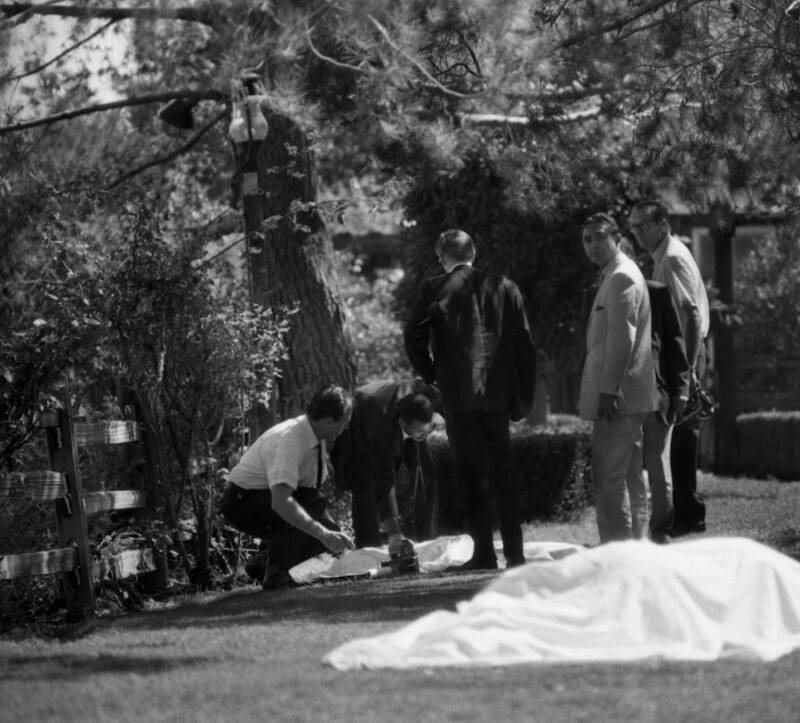
Bettmann/Getty ImagesInvestigators at the crime scene at the Cielo Drive residence.
It was later learned that Manson had allegedly ordered Charles “Tex” Watson, Susan Atkins, Patricia Krenwinkel, and Linda Kasabian to invade the home and murder everyone inside. By some accounts, they were instructed to “totally destroy everyone in that house, as gruesome as you can.”
Just a couple of weeks earlier, Manson had purportedly slashed musician Gary Hinman’s face with a samurai sword. His disciples, mainly Bobby Beausoleil, sewed up Hinman’s wounds with dental floss and tortured him for days until Beausoleil brutally stabbed him to death. Manson reportedly wanted the murders at 10050 Cielo Drive to be even more macabre: “Make it a real nice murder, just as bad as you’ve ever seen. And get all their money.”
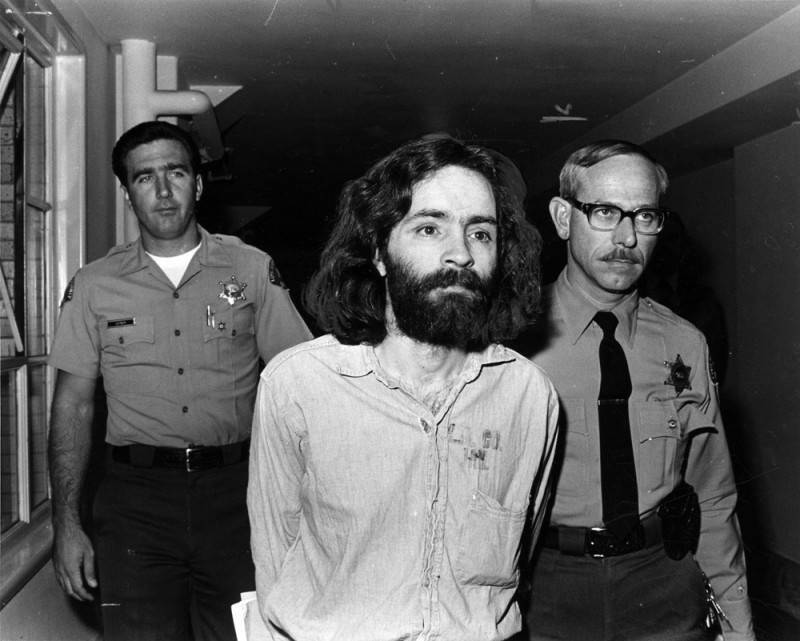
Los Angeles Public LibraryCharles Manson on his way to court.
Parent was the first to die. After the killers climbed nearby telephone poles and cut the wires, they found Parent in his car. Watson fatally shot him.
While Kasabian stood watch at the front gate, the others went inside.
Frykowski was the first to encounter the Manson Family members inside the home. He demanded to know who they were, to which he received the most terrifying answer imaginable from Watson:
“I am the Devil, and I’m here to do the Devil’s business.”
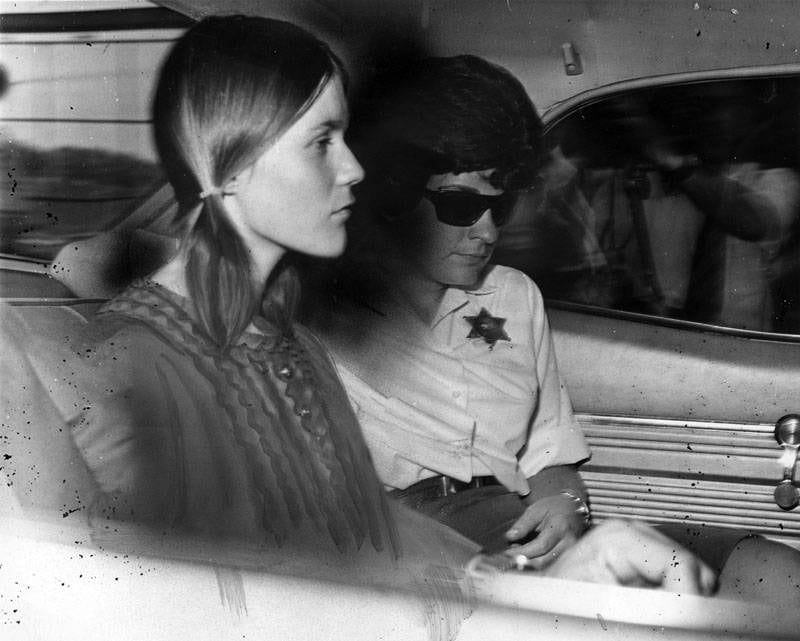
Los Angeles Public LibraryLinda Kasabian (left) served as the Manson Family’s lookout during the Tate murders. Here, she waits in a car outside of the courthouse during the murder trial. August 11, 1970.
What happened next was nothing short of horrific. The Manson Family, led by Watson, gathered all of their victims into the living room.
Frykowski was bludgeoned 13 times, stabbed 51 times, and shot twice. Sebring was stabbed seven times and shot. Folger was stabbed 28 times. “I’m already dead,” she reportedly said, as Krenwinkel kept stabbing her.
Sharon Tate begged the Manson Family to let her live long enough to have her baby. Instead, they stabbed her 16 times. Atkins then used Tate’s blood to write “PIG” on the home’s front door, determined to make the scene as “witchy” and gruesome as possible, as Manson had purportedly ordered.
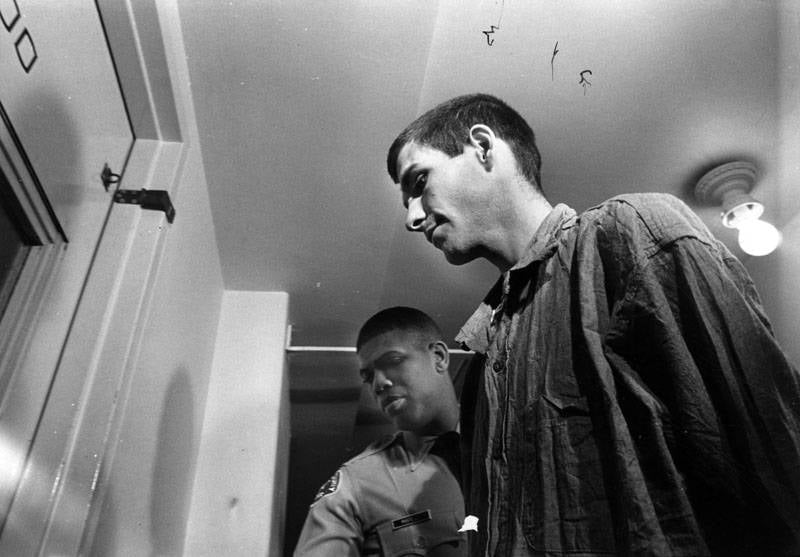
Los Angeles Public LibraryCharles “Tex” Watson during the trial. March 1, 1971.
The next morning, the world would come to discover just how well the Manson Family had followed that order during the murders.
In the meantime, however, Charles Manson allegedly ordered his murderous goons to kill two more people: Leno and Rosemary LaBianca.
The Murder Of Leno And Rosemary LaBianca At The Hands Of The Manson Family
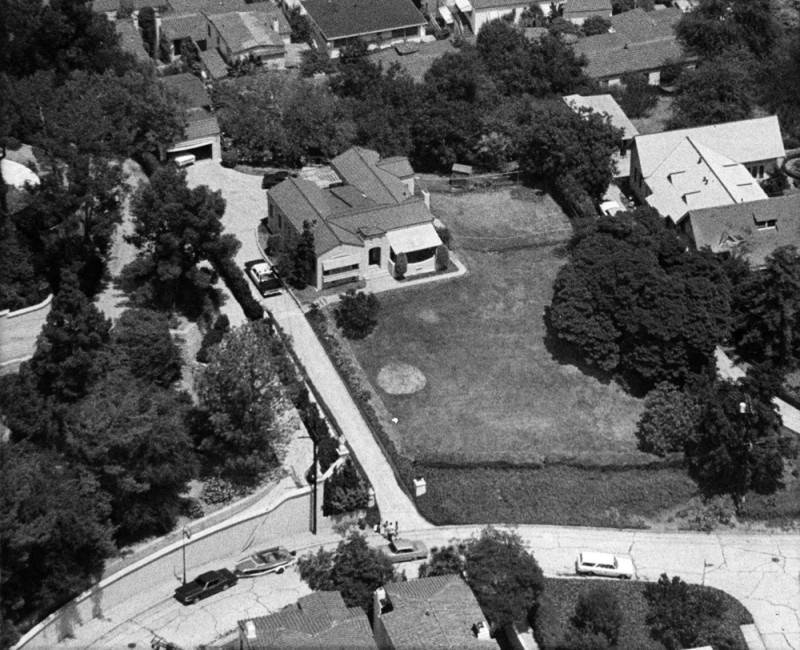
Los Angeles Public LibraryThe LaBianca residence in Los Feliz.
Leno and Rosemary LaBianca, both successful business owners, were on their way back to Los Angeles after a short trip to Lake Isabella on August 9th. Suzan, Rosemary’s 21-year-old daughter from a previous marriage, was along for the ride. Her 15-year-old brother, Frank, stayed behind with his friend’s family to enjoy his relaxing break by the lake for one more night.
By the time the LaBiancas hit the road, news of the murders at Cielo Drive had hit the airwaves. The family listened attentively to the radio the whole drive back, dropping off Suzan at her apartment before returning home.
According to Vincent Bugliosi, who prosecuted the Manson Family and wrote Helter Skelter: The True Story of the Manson Murders, Suzan later recalled that her mother told a friend the following, shortly before the incident:
“Someone is coming in our house while we’re away. Things have been gone through and the dogs are outside the house when they should be inside.”
When Frank got home at around 8:30 p.m. the following night, he noticed that his stepfather’s speedboat was in the driveway. This was unusual — Leno didn’t like leaving his boat outside overnight. Something was wrong.
He then saw all the shades in the house drawn shut. Nobody answered his knock at the door. He called out, and nothing but silence greeted him. Frank was now extremely concerned, and walked to a payphone to call the house.
There was no answer, so he called his sister Suzan. Together with her boyfriend, Joe Dorgan, they went back to the house at 3301 Waverly Drive in the Los Feliz neighborhood of Los Angeles. They found a back door open and went inside — and discovered the LaBiancas’ dead bodies.
Leno LaBianca was found with a cord around his neck and a bloody pillowcase over his head. He also had an object sticking out of his stomach. Rosemary also had a pillowcase over her head and a cord around her neck.
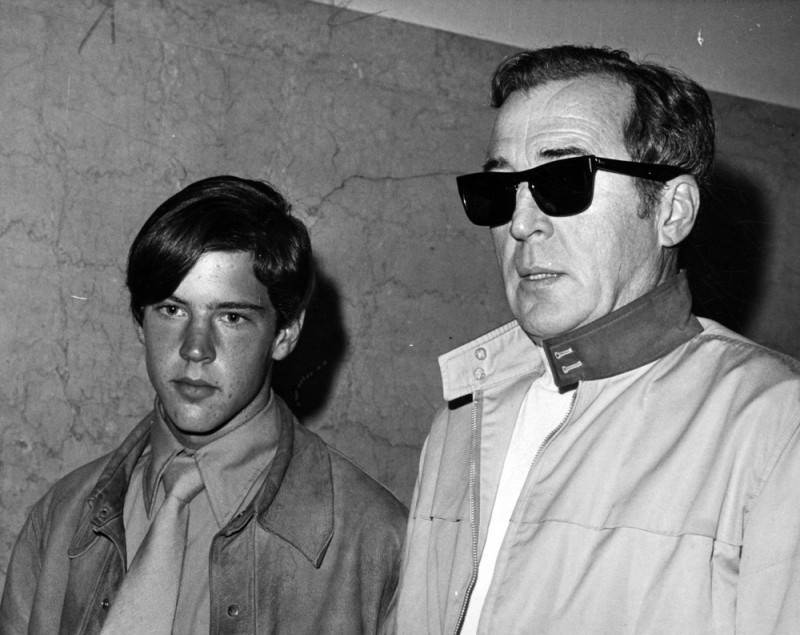
Michael Haering/Herald Examiner Collection/Los Angeles Public LibraryFrank Struthers Jr. (left) found the body of his stepfather, Leno LaBianca, after he came home from a trip.
Horrified and devastated, the three quickly ran over to a neighbor’s house, where they immediately contacted the police.
While local authorities had been completely enveloped by the Tate murders on Cielo Drive all day, their investigation was about to get a lot stranger.
Investigating The Blood-Soaked Tate Murders
When housekeeper Winifred Chapman arrived at 10050 Cielo Drive the morning after the Tate murders around 8 a.m., she expected it to be just another day. That is, until she found the place covered in blood, and ran to a neighbor’s house upon seeing a body on the lawn. They called the police.
The first LAPD officers on the scene — Jerry DeRosa, William Whisenhunt, and Robert Burbridge — were quick to inspect the property and the victims. After seeing Parent’s body in his vehicle, the authorities spotted the dead bodies of a man and a woman on the lawn. Both victims had multiple stab wounds, and the man also had several head injuries. Inside the home, police officers discovered a dead, heavily pregnant woman covered in blood with a rope around her neck that extended over a rafter in the ceiling, and a dead man, also covered in blood, at the other end of the rope.
None of the murder victims — later determined to be Tate, Sebring, Folger, and Frykowski — had their pulse checked. There was no need. Authorities did, however, find Garretson outside and arrested him. He had no idea what had occurred. Suspiciously unscathed, he was taken in for interrogation.
Though his subsequent lie detector test likely wouldn’t be admissible evidence, he passed with flying colors, and police moved on to other persons of interest. The early hours of the investigation, though, centered on theories of a drug deal gone wrong or a drug-laden party turned violent.
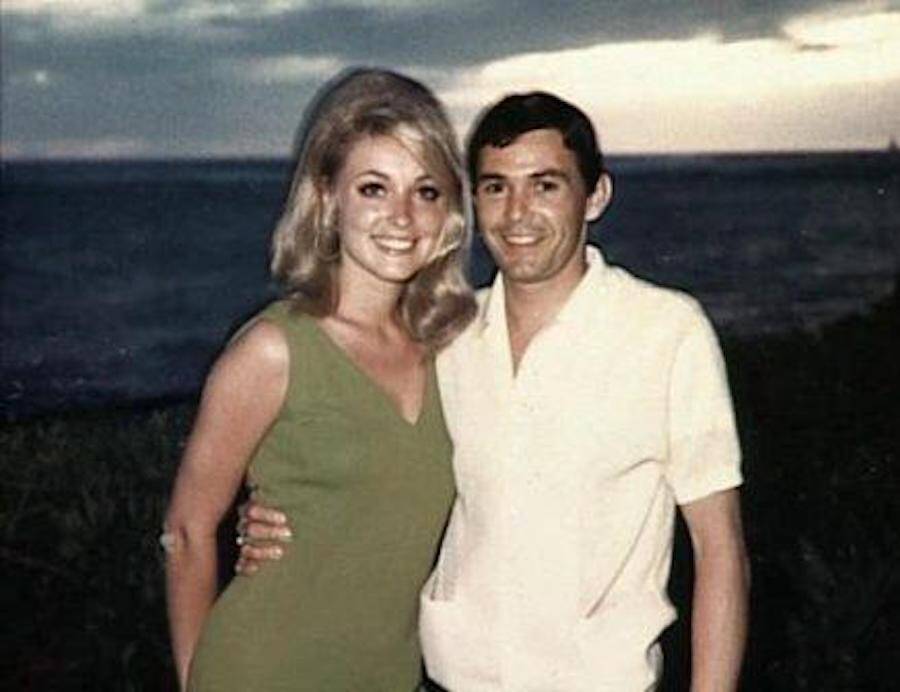
IMDbFormer couple Jay Sebring and Sharon Tate remained close despite Tate’s marriage to Roman Polanski.
Police did find marijuana, hashish, cocaine, and MDMA on the property, but the sheer violence of the murders led cops to abandon their initial theories.
Polanski’s manager, William Tennant, was playing tennis when he got the call that his friend’s pregnant wife had been butchered. He was tasked with the horrifying responsibility of identifying all the dead bodies at the house. Tennant had no idea who Parent was, but identified Frykowski, Tate, Folger, and Sebring. Before long, there were so many cop cars and journalists on Cielo Drive that police officers and reporters were actively detangling themselves in order to maneuver up and down the road.
“It’s like a battlefield up there,” Sgt. Stanley Klorman told reporters.

Police HandoutThe body of coffee heiress Abigail Folger at Cielo Drive.
For Tennant, the time to call his friend had come.
“Roman, there’s been a disaster in a house… Your house,” Tennant said. “Sharon is dead, and Voytek and Gibby and Jay.”
Shocked, Polanski demanded to know what had happened, initially thinking that there had been a fire. But then, he learned the awful truth.
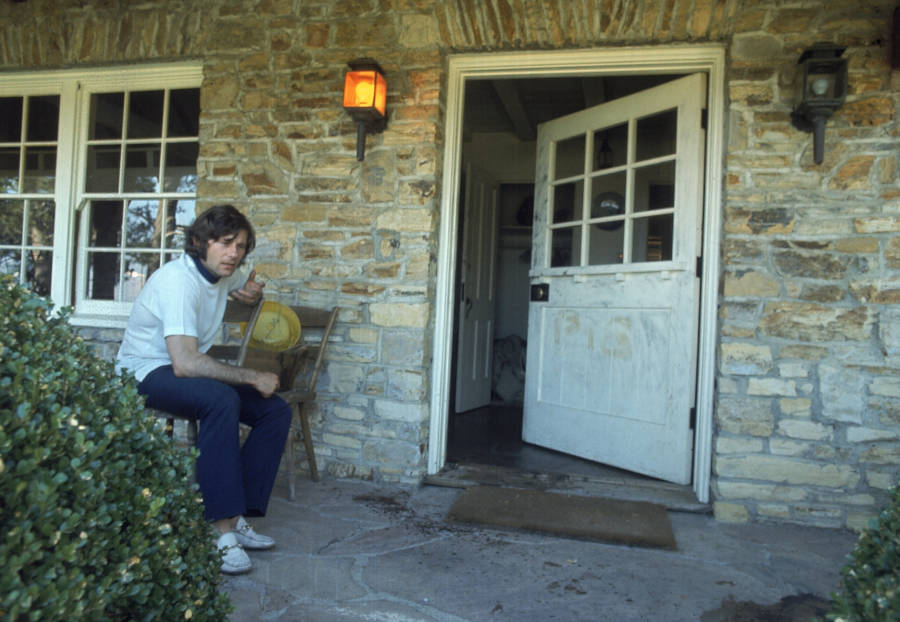
Julian Wasser/The LIFE Images Collection/Getty ImagesRoman Polanski sitting on the bloodied porch outside his home after his wife and unborn child were murdered by the Manson Family. The word “PIG” can still be seen scrawled on the front door in his wife’s blood.
Polanski flew back to the U.S. and barricaded himself in a hotel room, under a doctor’s supervision. The police asked him a few questions, but mostly left him alone. Polanski later addressed the press in a short statement and appeared in a bizarre LIFE magazine photoshoot where he posed in front of the blood-scrawled door of the house where his wife was butchered.
The Horrific LaBianca Crime Scene
The Manson Family again tried to be “gruesome” with the LaBiancas — but even more so this time around. Some sources state that Manson was angry about the sloppiness of the Tate murders, while others suggest that Manson believed the killers had not caused enough “panic” among the victims.
In a parole hearing, Manson Family member Leslie Van Houten later explained that “Tex” Watson and Charles Manson himself broke into the LaBianca residence and tied the married couple up.
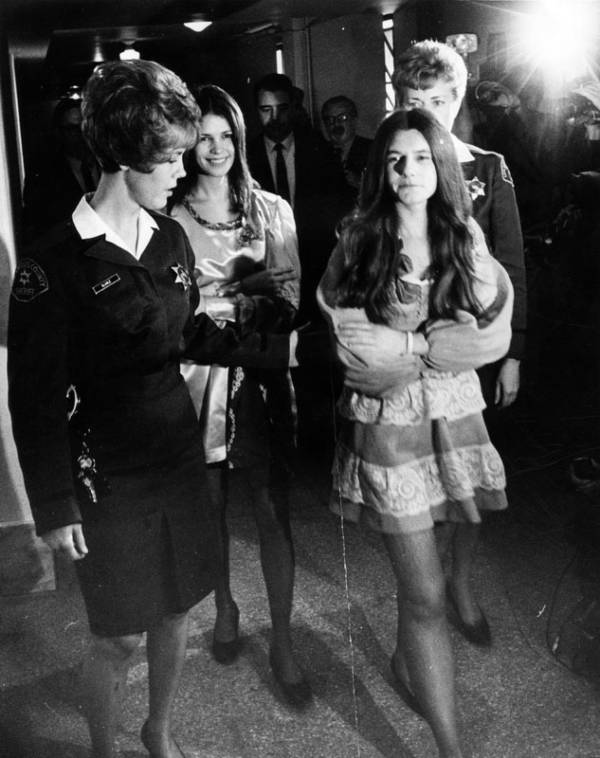
Los Angeles Public LibraryLeslie Van Houten and Patricia Krenwinkel being led to court. April 17, 1970.
“[Tex] told Pat [Patricia Krenwinkel] and I to go into the kitchen and get knives, and we took Mrs. LaBianca into the bedroom and put a pillowcase over her head,” Van Houten said. “I wrapped the lamp cord around her head to hold the pillowcase on her head. I went to hold her down.”
When Rosemary LaBianca heard her husband’s screams and called out to him, Van Houten and Krenwinkel brutally stabbed her.
According to The Toronto Sun, Van Houten admitted this herself in 1994.
“I went in and Mrs. LaBianca was laying on the floor and I stabbed her,” she confessed. “In the lower back, around 16 times.”
Officers later found Leno LaBianca on the living room floor of the couple’s home, with a bloody pillowcase over his head, a cord tied around his neck, and his hands tied behind his back with a leather thong.
Rosemary was found lying on her bedroom floor in her favorite dress — with blue and white horizontal stripes — which was bunched up over her head, exposing her naked body. Evidence indicated that she had tried to crawl away from her killers, tragically only tightening the cord around her neck.
What Happened After The Manson Murders?
The case against the Manson Family began largely due to Susan Atkins, who bragged about murdering Sharon Tate while in jail for car theft. By 1970, Atkins, Manson, and some of Manson’s other followers were put on trial for murder. They were eventually found guilty of killing nine people total, but some believe they were responsible for even more deaths.
Eerily, some theories emerged that Manson himself was a scapegoat, as there was no evidence that he personally killed anyone himself. There’s also no definite proof that he forced his followers to go through with the Tate-LaBianca killings. But in the end, his followers were able to convince authorities that he had indeed been the mastermind behind the massacre.
As for a motive, Manson purportedly hoped to frame the Black Panthers for the murders so that the “race war” he’d told his followers about could begin. Manson’s followers also claimed that they “wanted to do a crime that would shock the world, that the world would have to stand up and take notice.”
Nearly every Manson Family member involved in the killings — including Manson himself — was initially sentenced to death. But they were spared in 1972, when California commuted all death sentences to life imprisonment.
Leslie Van Houten was only 19 when she helped kill Rosemary LaBianca — and she was the youngest of the Manson Family members involved in the murders. She had once been the homecoming queen at her high school.
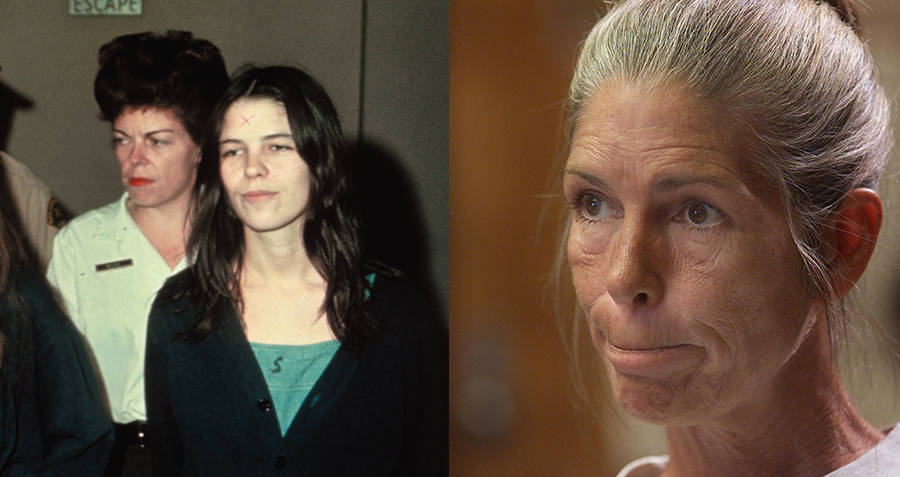
Getty ImagesLeslie Van Houten was the youngest of the Manson Family members to be convicted of participating in the murders of the LaBiancas. She was eventually paroled in 2023.
To this day, her participation in the LaBianca killings continues to stir up discussion revolving around how much personal agency she had over her actions. California Governor Jerry Brown denied her parole in 2016 and 2018.
“Both her role in these extraordinarily brutal crimes and her inability to explain her willing participation in such horrific violence cannot be overlooked and lead me to believe she remains an unacceptable risk to society if released,” Brown explained at the time.
The parole board tried to release Van Houten once again in January 2019, but Governor Gavin Newsom followed Brown’s lead and denied it. Some critics felt this was merely political — while others felt she deserved to remain imprisoned. She was eventually paroled in 2023 after the California Court of Appeal ruled in her favor, and Newsom agreed not to block her parole.
Susan Atkins was diagnosed with brain cancer and died in prison in 2009, and Charles Manson later died in prison in 2017 at the age of 83. Watson and Krenwinkel remain behind bars to this day, and Krenwinkel is now the longest-serving female inmate in California history.
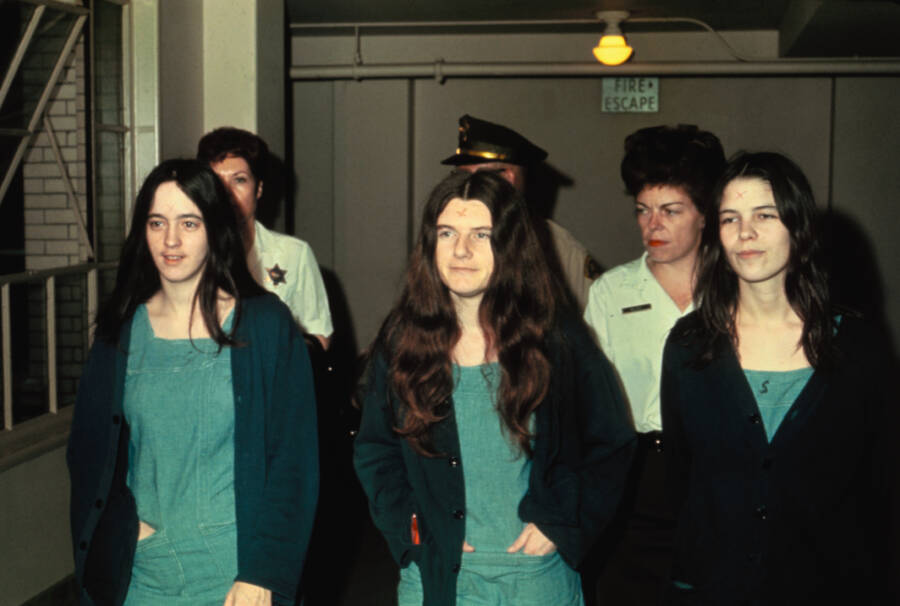
Getty ImagesManson Family members Susan Atkins, Patricia Krenwinkel, and Leslie Van Houten.
Lynette “Squeaky” Fromme — a Manson Family member who wasn’t involved in the murders but fervently supported Charles Manson and the others at trial — is a free citizen despite her own crime. Fromme later unsuccessfully tried to assassinate President Gerald Ford in 1975. She was imprisoned, released in 2009, and moved to upstate New York.
Linda Kasabian, who served as the lookout during the Tate murders, was the star witness for the prosecution and thus was given immunity. While the Manson Family praised Manson as a Jesus Christ-like figure, she called him “the Devil.” In the end, she was crucial to the prosecution’s case.
“I doubt we would have convicted Manson without her,” Bugliosi said.
In the end, the “Devil” lived the rest of his life behind bars. His terrifying, mythologized persona continues to serve as fodder for rebellious youth culture, art, and true crime — and haunts Hollywood to this day.
After learning about the Manson murders, read about Mary Brunner, the first member of the Manson Family. Then, go inside the story of Paul Watkins, Charles Manson’s former recruiter — who helped bring the cult leader down.






